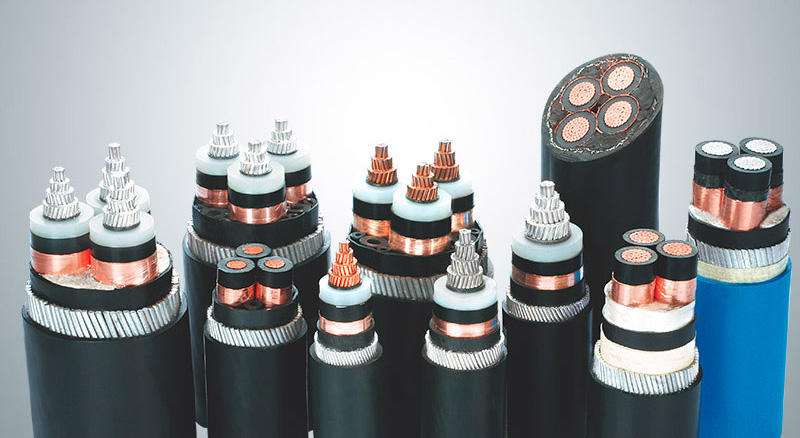
Here is why High Voltage Cables are trending in the industry. All that we need to know about the high voltage cables are their types, components, advantages and disadvantages in their application. Due to an increase in the demand of electricity with the growing population, its proper supply must be guaranteed. And for the supply of electricity over long distances, there is a need for high voltage cables. The properties of this cable make them more efficient for transmission and minimize power loss during long-distance transmission. The inclination towards renewable energy such as solar energy and wind energy requires the construction of new power grids. The replacement of old power grids by new will increase the demand for high voltage cables.
Before knowing about the high voltage cables we need to understand what is high voltage? The amount of voltage power that is above a threshold is called high voltage. The voltage power that exceeds 1000 volts is considered as high voltage and is dangerous for living beings. For electrical transmission over long distances, high voltage is used to reduce the loss of current.
High voltage cables are used to transmit electric power at high voltage. These cables are fully insulated and ensure the safety of the living being as high voltage causes electric shock that may be fatal for them. It consists of an inner conductor that is insulated from outside. The conductor carries high voltage and for that purpose resistant cables are needed which can bear high voltage.
High voltage cables mainly consist of conductor and insulation. Apart from these, there are many other components such as conductor shield, non-metallic insulation screen, metallic insulation screen, laying up, inner sheath and outer sheath.
Modern High Voltage Cables are simple and consist of a few parts that are conductors, conductor shield, insulation shield, metallic shield, joints, and jackets. Functions of these components are as follows:
Cables are used to transmit electrical energy. They safely supply electricity from the power source to different loads. Different cables are designed to achieve this purpose. Some of them are given below.
Rubber cables
Rubber cables are made up of oil products or rubber obtained from tropical trees but are very liable to damage as it absorbs moisture.
Vulcanized rubber cable
Rubber cables are modified to form vulcanized rubber cable. In this type of cables, rubber is mixed with mineral compounds like zinc, lead, or sulfur. Vulcanized rubber cables are more durable are have higher mechanical strength compared to rubber cables.
Polyvinyl chloride cables
Polyvinyl chloride cables have good dielectric strength. Hence it has broad demand in various industries.
Advance cables
Advance cables like Polychoroprene cables are resistant to heat and are more durable.
The features of high voltage cables make it special in terms of working efficiently with specific switching and distribution panels. The supply of high voltage from these cables can be regulated from control rooms and can be easily monitored remotely. To supply in local areas, sub-stations lowers the voltage in the high voltage cables. These are few specifications of high voltage cables.
There are many advantages of high voltage cables. During the transmission of high voltage by using these cables, there is almost negligible loss of current due to leakage as it is highly insulated. It also minimizes damage and harm to living beings. The stability problem is almost zero. It has a higher carrying capacity. Voltage can be regulated in power centres and sub-stations.
The high cost of High Voltage Cables is a major limitation in its application. The installation cost is also high that makes it difficult to use without having good funds. These are a few disadvantages of High Voltage Cables. But regarding performance, it has no discrepancies.
The High Voltage Cable Market has been witnessing rapid growth as the demand for electricity is increasing with an increase in population. The setting up of industries and companies need the supply of electricity that puts an additional demand in the supply. People are getting more dependent on the internet, use of mobile phones, laptops, and desktops, further increases the need for electricity. All these factors have a good impact on the High Voltage Cable market.
Due to the shift towards the renewable source of energy causing the replacement of old grids networks. The establishment of a new transmission line is an important factor that is driving the growth of high voltage cable market in the coming years. The increase in trade between two countries increasing the setup of overhead, submarine as well as an underground transmission line that is expected to facilitates better communication between the countries. This is predicted to increase the demand for the production of high voltage cables and in turn, drive the growth of the market. The Global High Voltage Cables Market has been anticipated to rise at a growth rate of 5.6% CAGR over the forecast period.